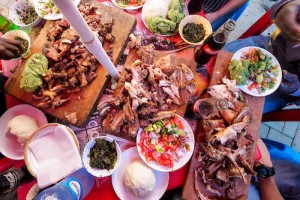
East Africa's most cosmopolitan city, Nairobi is Kenya's beating heart, an exciting, maddening concrete jungle that jarringly counterpoints the untrammelled natural beauty to be found elsewhere in the country. Tourist places in Nairobi that are worth visiting are National Museum, Railway Museum, Giraffe Centre, Karen Blixen, Karura Forest, David Sheldrick Trust Elephant Orphan Centre, Ngong Hills, Blue Sky Tours in Diamond Plaza, Nairobi Arboretum, Panari Sky Centre, Bomas of Kenya, Uhuru Garden, GP Karting, Village Market, Mamba Village, Paintball Fury Limited, Maasai Ostrich Farm, Paradise Lost, August Memorial Park, Kenya National Archives, KICC, Art Centres and Nairobi National Park. Kenya’s largest city and capital, Nairobi implores diversity in romance and puts forward exalted adventure. The city transformed from a meek camp for the railway employees in the year 1899 to the capital named British East Africa by the year 1907. Today, the rich retrospective history and tribal culture and lifestyle are brought to life through its excellent and knowledgeable museums. In particular, the museum named Karen Blixen Museum is one of the biggest hits – not only the African fans come to praise and appreciate the museum but also people from all over the world visit the museum to view the namesake Danish author who with drudgeries toiled on the coffee farmstead in the midst of the beautiful Ngong Hills. Even in such a scampering city like Nairobi, wildlife is a colossal draw. Being a cosmopolitan capital, Nairobi is the only city in the globe that brags a safari park within its frontiers.


